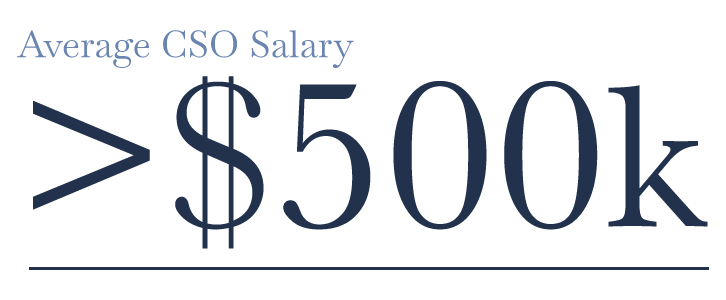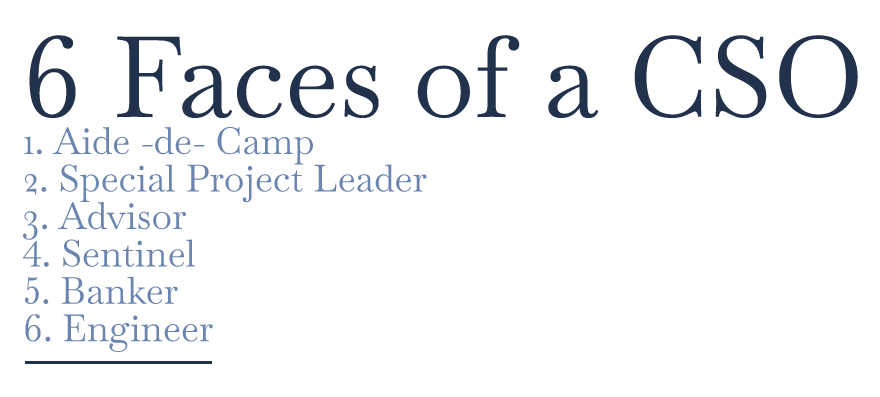The Path to the Chair: Chief Strategy Officer
7 Min. Read

Every great business idea begins with a strategic mind. The Chief Strategy Officer (CSO) should be considered such a mind. Across industries, these executives are the masterminds behind many of the solutions which help maintain profitability for firms. Strategy might often be as overlooked as it is crucial. The right strategy, however, improves value offered to stakeholders, revenue, client service, and more. To reach this role, the aspiring CSO must embark on a journey to the chair.
Beginning the Journey
Top strategic leaders have a common beginning in whichever industry they begin their respective practice. We canvassed publicly available data on over 400 current and past CSOs. We limited this survey to the CSOs of publicly traded companies.
A four-year degree is nearly a requirement for a CSO. We found that 93.56% of CSOs publicly listed a bachelor's degree or other four-year credential as part of their education. Only 6.44% of the CSOs we looked at had no professional credential on display, which of course does not indicate that there is no degree to display.

We found fewer CSOs who held an advanced degree than held only a Bachelor’s-level degree at a rate of 35% to 65%, respectively. Former CSOs were more likely than current CSOs to hold a master's degree or higher, at a rate of 67.4%.

We found the greatest concentration of CSO roles in the application technology and software industries. We also examined the beginning stages of a career to establish a benchmark for what one might need to do to ensure a CSO role at some point in their career. According to our research, CSOs may take on varying roles and this may depend further on the industry in which they practice. We did find some common threads. The U.S. Bureau of Labor Statistics (BLS), in their study Top Executives, commented that "...executives typically need extensive managerial experience..." As mentioned before, select industries could demand varying backgrounds that might fit to support senior level teams.
The skill set of a CSO could lead them to a spot as a Chief Executive Officer. As Lisa Rabasca Roepe notes in The Changing Path to the CEO Seat, "More new CEOs have C-suite experience as CTO, chief risk officer or chief strategy officer (emphasis added)..." Working up to a head strategic role may also have potential for future leadership roles. Furthermore, BLS expanded by sharing that for top or senior-level executives, at least 5 or more years in a related field would almost qualify a professional into a role of CSO. CSOs may wear multiple hats as they approach this position of interest or expertise. Nonetheless, this would only appear to be a beginning for a unique leader.
Getting the Seat and Staying
Whether it is the first c-suite position in a career or not, getting the job is hardly the end of the journey. Sustainable wages might also be an attraction for those concerned. Our research found that the arithmetic mean for annual salaries of current C-Suite strategic heads was $516,595.98. This includes professionals who have served numerous times within this same role and who presumably saw salary increases during their tenure. In the data, former CSOs earned an annual arithmetic average of $402,953.34. This $113,642.64 difference could easily be chalked up to inflation or natural fluctuations within given economies. Nonetheless, there would appear to be an increased value in this chair of Chief Strategy Officer.

As we dove into the varied roles a CSO might take on, we found a few ways to encapsulate the experience. In The Making of a Successful Chief Strategy Officer: Insights from the Field, Tom Shoenwaelder lists six faces to a contemporary CSO’s role: “The advisor...The sentinel...The banker...The engineer...The aide de camp...The special project leader...” Each face included varying themes that might be distinct from one another.

As an advisor, a CSO could be called upon for direction into a new fiscal quarter. Initiatives that must go to market might demand expert reasoning and influence from strategic experts that have guided and managed teams in prior roles. This could also go together with an education in engineering or a similar field.
A CSO’s position could be to act as a sentinel that detects market shifts on a periodic or annual basis. Withholding this talent or skill in forecasting demands from external and internal stakeholders might also ensure success in this executive-level role. Sentinel type leadership can be invaluable during times of economic volatility. At such times, CSOs must rely on both qualitative and quantitative reasoning leading to innovative decisions.
A CSO might also be expected to enact their skills as a banker by promoting deals and partnerships that could enhance financial gain. This may show up in situations of potential mergers and acquisitions. Business development would fit into how one could view this face of their role.
Fourthly, it looked to be articulated that CSOs must enact skills that were similar to engineers, as it may be expected that one dictates planning processes and more. Of course, this may call for experience that details an individual who has executed plans within company initiatives or more. Monitoring planning may also be included within recurring responsibilities.
Fifthly, CSOs may be an additional assistant to their acting Chief Executive Officers as an aide de camp. In this position, it would look to be vital that one encamps themselves as a make-shift advisor or aide to their leader, which in turn could extend life cycles of their senior leadership. In this context, it could be clearly viewed how CSOs may become natural assistants upon executive boards.
Lastly, CSOs might be diversly engaged leaders who take part in a multitude of initiatives that support their respective organizations as special project leaders. This multifaceted leader could work to be a true asset to their teams as they alleviate stresses in possible bottlenecks in processes. In this role, a caution might be that this could distract one from long-term objectives.
On another hand, Rodger Draper wrote in What Kind of Strategist Does Your Company Need? that strategic heads' daily tasks could also be further clustered into archetypes, suggesting “Architects (40 percent of the CSOs surveyed) use factual analysis to promote growth...Mobilizers (20 percent) build capabilities and deliver special projects...Visionaries (14 percent) forecast trends and shocks. Surveyors (14 percent) aim to spot disruptions and offer timely advice...Fund managers (12 percent) seek to improve performance by reallocating resources and optimizing corporate portfolios.” This scenario would look to categorize CSOs tasks into 5 roles, which could provide more insight to how these leaders are possibly expected to perform. Regardless, if a CSO could prove themselves to be efficient in many positions or scenarios, they could be further perceived as a necessitated player as a member of their executive team.
After the Chair
As with most beginnings, there may be an eventual transition or flow of succession that might take place. Following a CSOs time in their role, there are common stages of retirement or continued executive service. In select cases, as our data has shown, there are repeat stints within a similar CSO role, but a common end point or resignation may occur. It would appear, labor market attrition rates rise and fall. Returning to the BLS report Top Executives, they note that openings for new CSO roles or for a senior executive were a “...result from the need to replace workers who transfer to different occupations or exit the labor force, such as to retire...” As might be shown, natural demand for strategic veterans could fluctuate as much as other labor markets. Departures from labor markets may be common from diverse industries and respective organizations. Regardless, paths following a service within a role as a Chief Strategy or Growth Officer could end based on select circumstances that may shift labor markets and management of human capital for time to come.
Contemporary strategic leaders find themselves in cyclical beginnings that are filled with unique responsibilities and in an end that is categorized as a natural departure. To this point, we find that demands for select CSOs changes in varying industries. Nonetheless, it may be wise to keep in mind education requirements and experience that could dictate success in securing a role as a CSO. Trends within labor markets and expectations from today’s talent easily changes based on common variability and advancements in today’s industries. In all, one must carve out their unique path and be open to potential new beginnings that await them.

